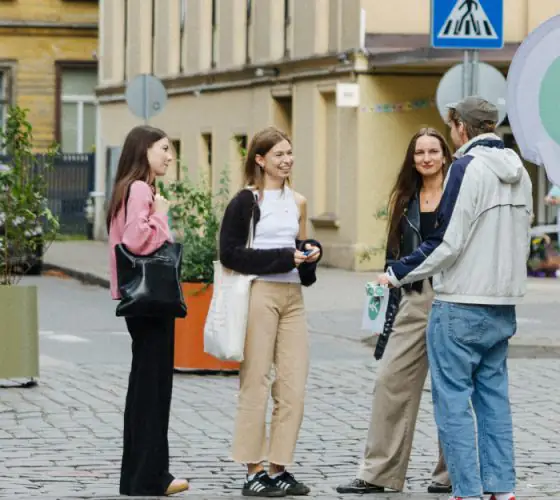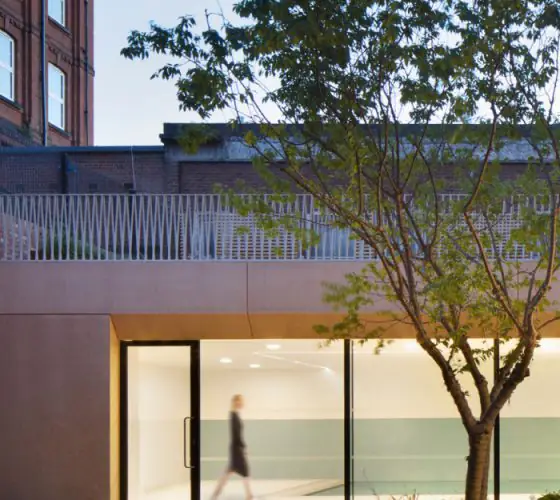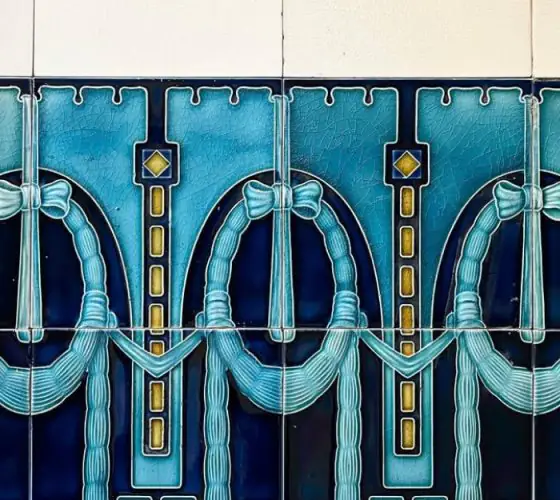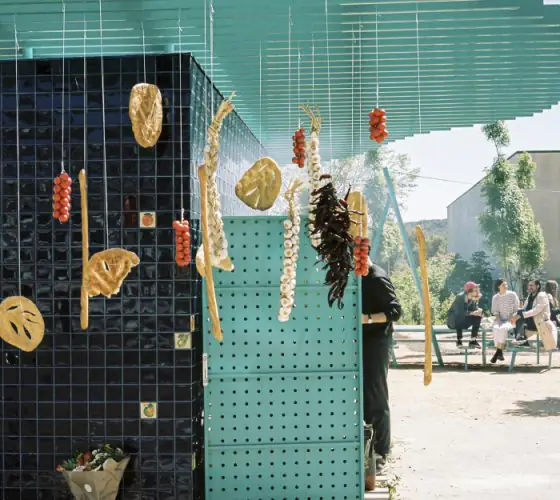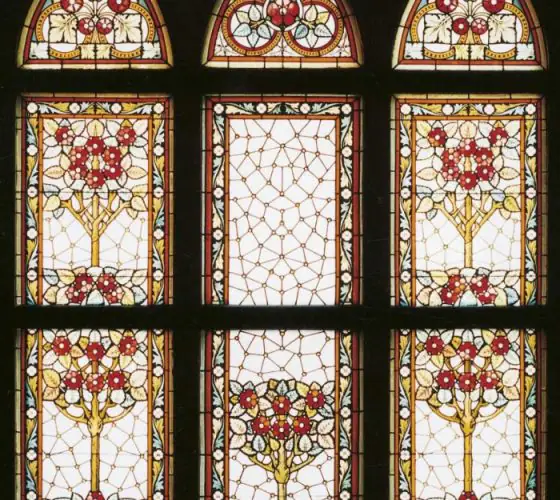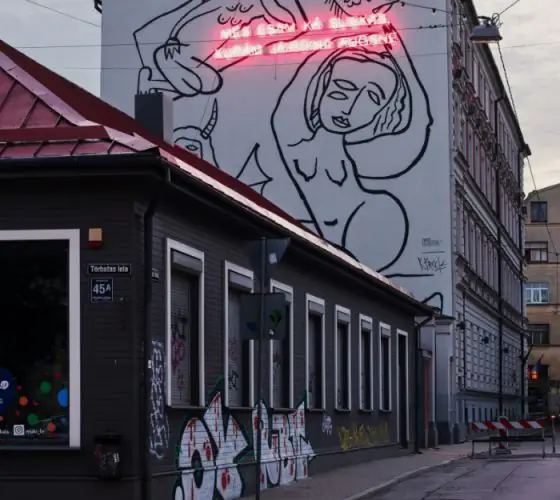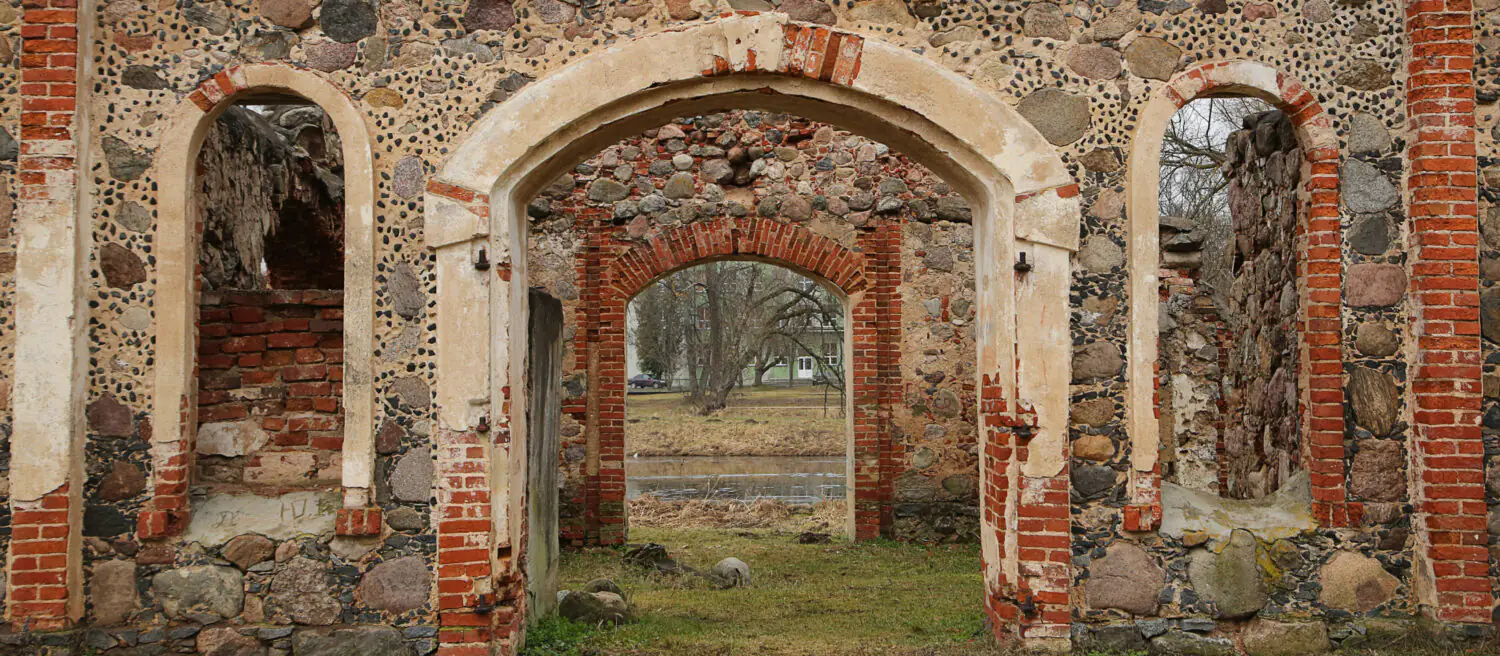
stock.adobe.com
Even aside from the architecture, what’s more, there’s a steampunk museum, a snail farm, and a fabulous gallery where anyone can transform into a dressed-up doll. We’ve detailed these unique attractions in our Neighborhood review. And now we offer a closer look at the phenomenon of Preil’s architecture of the 1990s–2000s, as well as talk about the equally important monuments of the Soviet era.
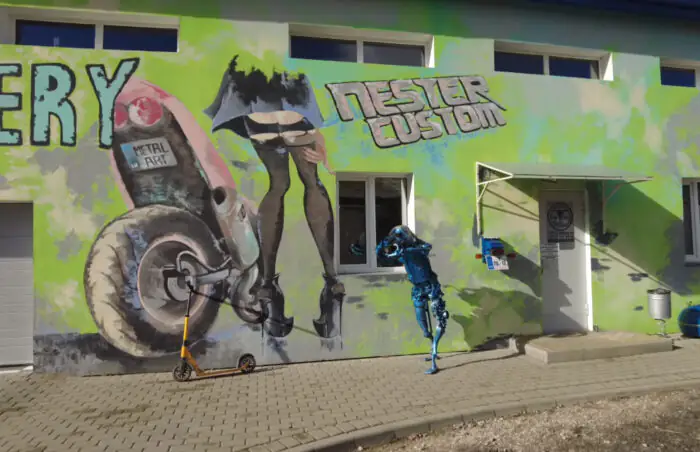
Photo: Aleksandr Semenov, Russian Camembert
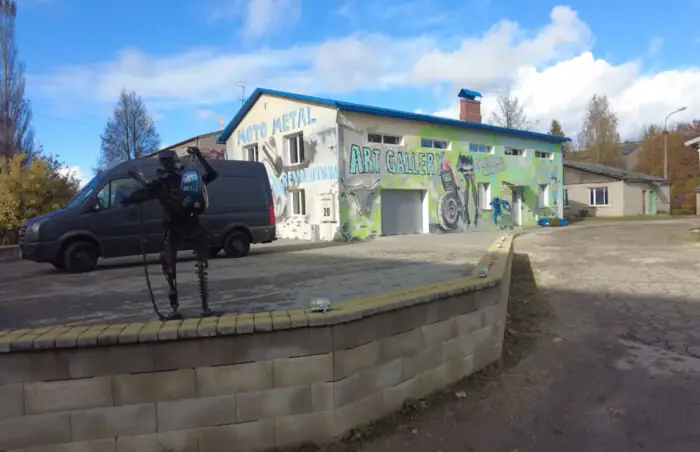
Photo: Aleksandr Semenov, Russian Camembert
Back in the 1970s, Western Europe and the United States saw a transition from utilitarian and ascetic modernism to playful and eclectic postmodernism. By the 1980s, these trends had reached the Latvian SSR, but such Western “pranks” were not very welcome in the central governing bodies. Postmodernism was perceived as a destructive, irrational phenomenon. For this reason, architects’ attempts to design in a postmodernist vein were rather cautious, and Soviet postmodernism is often referred to as “timid”.
With the collapse of the Soviet Union comes a new era. Architects experimented in different directions, which gave rise to a great variety of artistic styles: from contextualism, imitating the surrounding buildings, to contrasting “glass”. Preili is a very representative city to explore the diversity of post-Soviet postmodernism.
Revanchism and Regionalism
Shortly before the collapse of the Soviet Union, the state’s anti-religious policy began to soften. New churches of different confessions and directions were gradually built. The most unconventional projects are found among Lutherans and Catholics, but in the turbulent 90s even Old Believers sometimes made bold experiments. A rare example of postmodernist architecture of an Old Believer prayer house is located in Preili at 33 Jelgavas Street.
The first wooden church for Old Believers appeared in the city as early as 1905. During several decades it burned several times, and in 1963 it was dismantled by the Soviet authorities. In the early 1990s, the believers decided to revive the church and began looking for funds and a place to build it. Then the Roman Catholic Curia came to their aid and gave them a plot of land on the outskirts of the city near the Old Believers’ cemetery. And already in 1991 the project of the new prayer house was ordered in St. Petersburg in the workshop of Boris Ustinov. One of the most outstanding works of this architect is the Palace of Marriages of the Vyborg district of St. Petersburg, in the dynamics of the forms of which one can find parallels with the Preili building. The construction of the temple was conceived in the Latvian Soviet Union, but the building was consecrated only at the end of 1996 — already in the independent country.
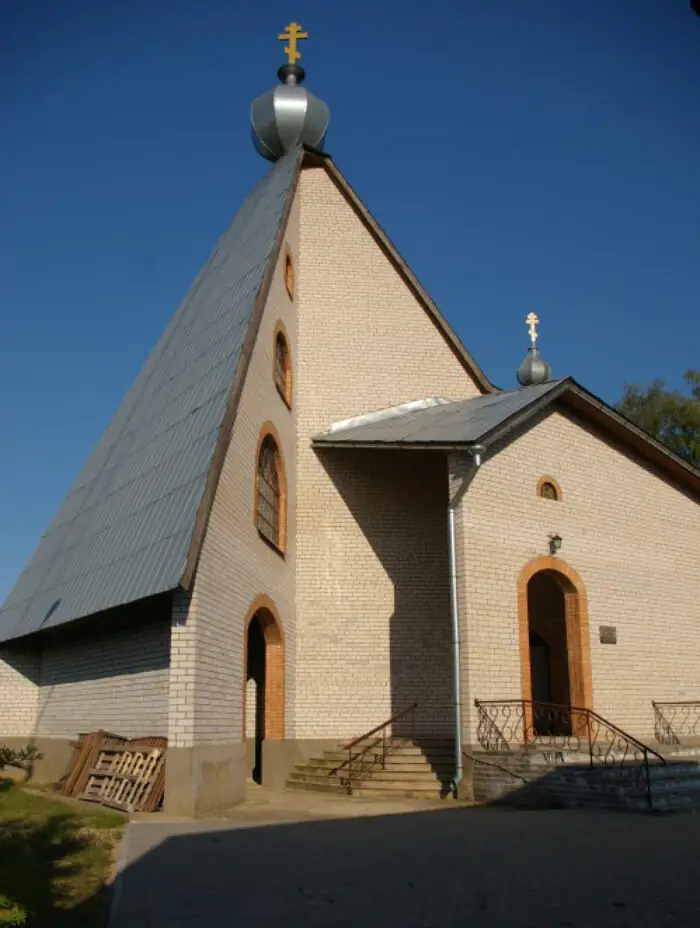
Photo: visitlatgale.com
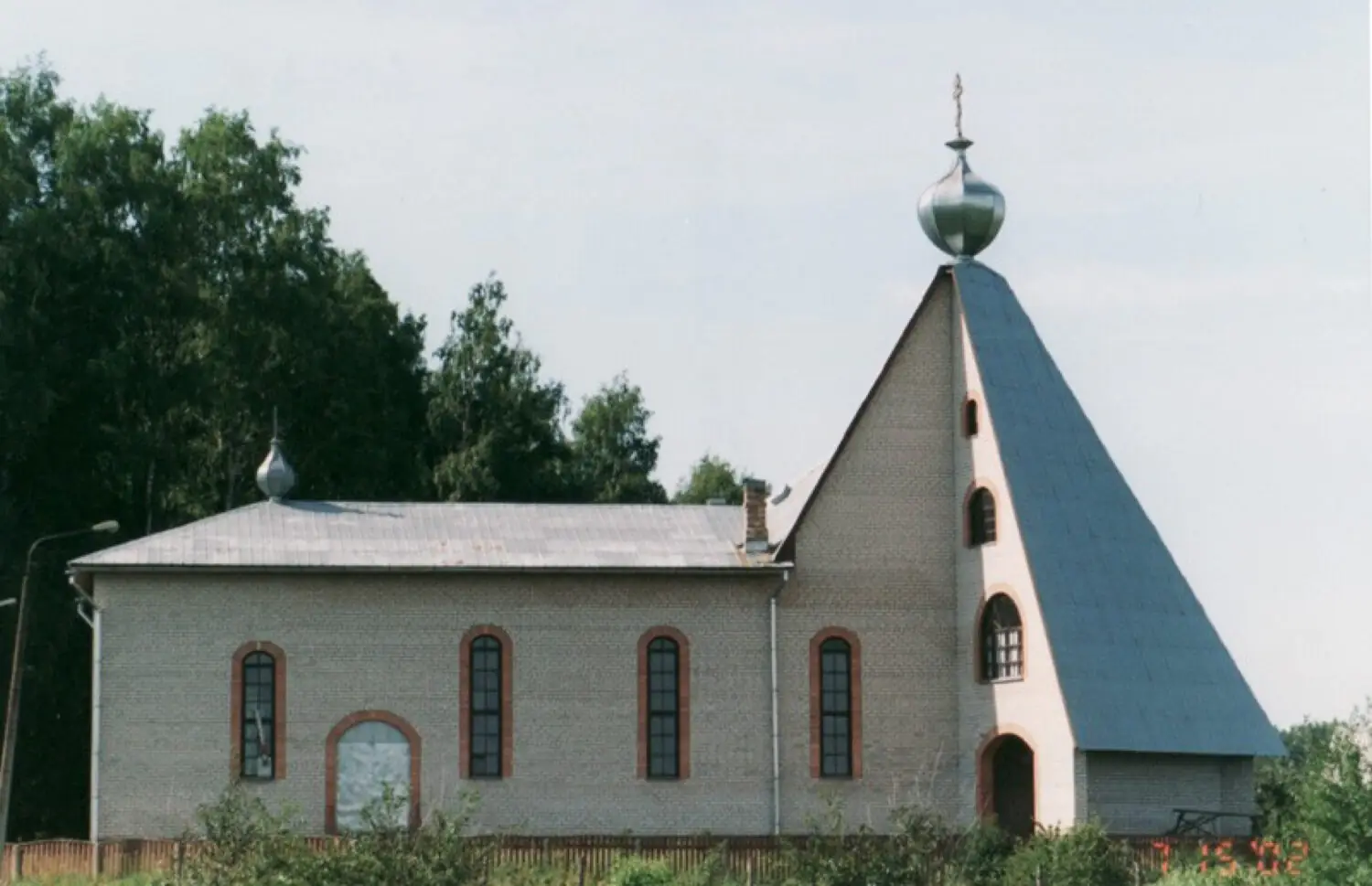
Photo: visitlatgale.com
The architectural solution traces regional features of Latvian postmodernism: external asceticism is complemented by dynamic sharp forms, and the pronounced triangular roofs refer to medieval and folk buildings. This shows respect for local cultural features and attention to the surrounding chamber buildings. But above all, this project takes revenge on the USSR’s policy of state atheism: while the Soviet Union was falling apart, the church was being built.
Contextualism
Careful attitude to the surrounding buildings and attempts to fit into the style and height context led to the emergence of architecture that mimics neighboring buildings.
In Latvia, this phenomenon is most characteristic of the buildings of the 1990s and early 2000s. A good example can be found on Brīvības Street, 5a. This shopping center does not try to completely imitate the old eclectic architecture standing next door to it, but tries to preserve the chamber atmosphere of the street. It does not highlighted, but enters into a quiet dialogue with its neighbors, while maintaining its individuality.
The dynamic zigzag of the roof culminates in a strange brick shape resembling a lantern with a twisted base. This striking architectural element stylistically echoes the brick house nearby.
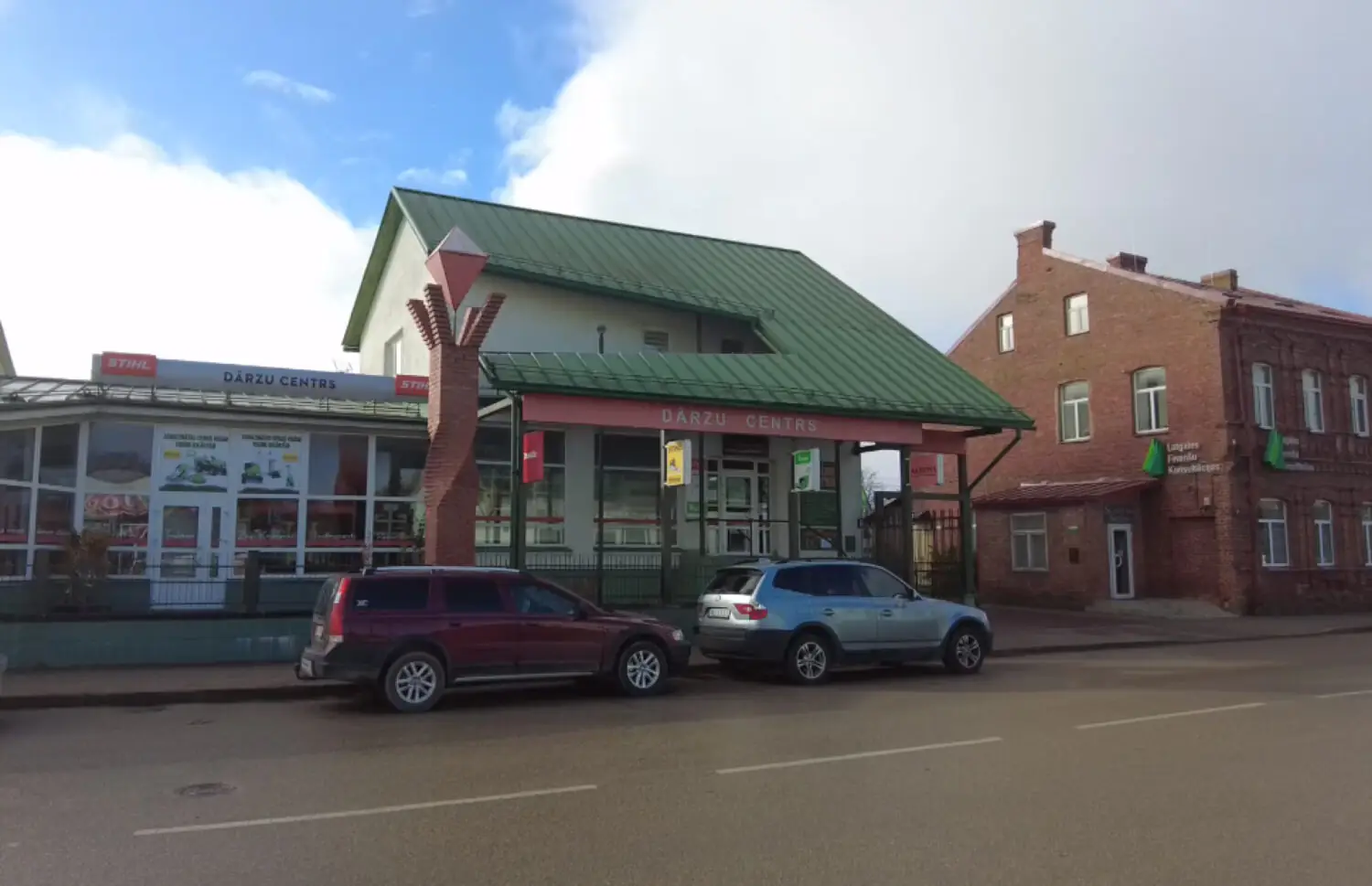
Photo: Aleksandr Semenov, Russian Camembert
Fusion
This is a beautiful name for an artistic trend that tries to combine the incongruous. In the 2000s, who didn’t dream of doing a fusion-inspired renovation in their home? Then it was the most fashionable trend.
Strange curved shapes complemented by classical decor, numerous niches in chaotic order and contrasting materials — here it is the true beauty of postmodern. Agree that it is quite irrational to build a through-arch opening with a balcony to which there is no single approach.

Photo: Aleksandr Semenov, Russian Camembert
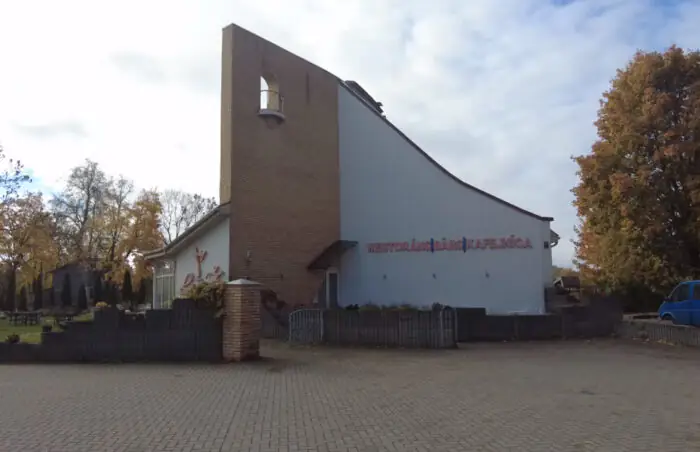
Photo: Aleksandr Semenov, Russian Camembert
But in the building of the restaurant Levaž on Kooperatīvā Street, 1c, they just did so. Soviet architects, adherents of utilitarian modernism, would have asked the architect: “What is this for?“. But the postmodernist can calmly answer: “Just for fun!“.
Deconstructivism
One of the most popular trends in postmodernism is deconstructivism. Imagine a simple functional building that has been cut into different pieces and joined together in a random order. The architect used similar artistic means to create the shopping center at 12 Brīvības Street. But even this daring stylistics does not disturb the general context of the central street. This building fits in quite well with the surrounding low-rise development, which includes buildings from the nineteenth and twentieth centuries.
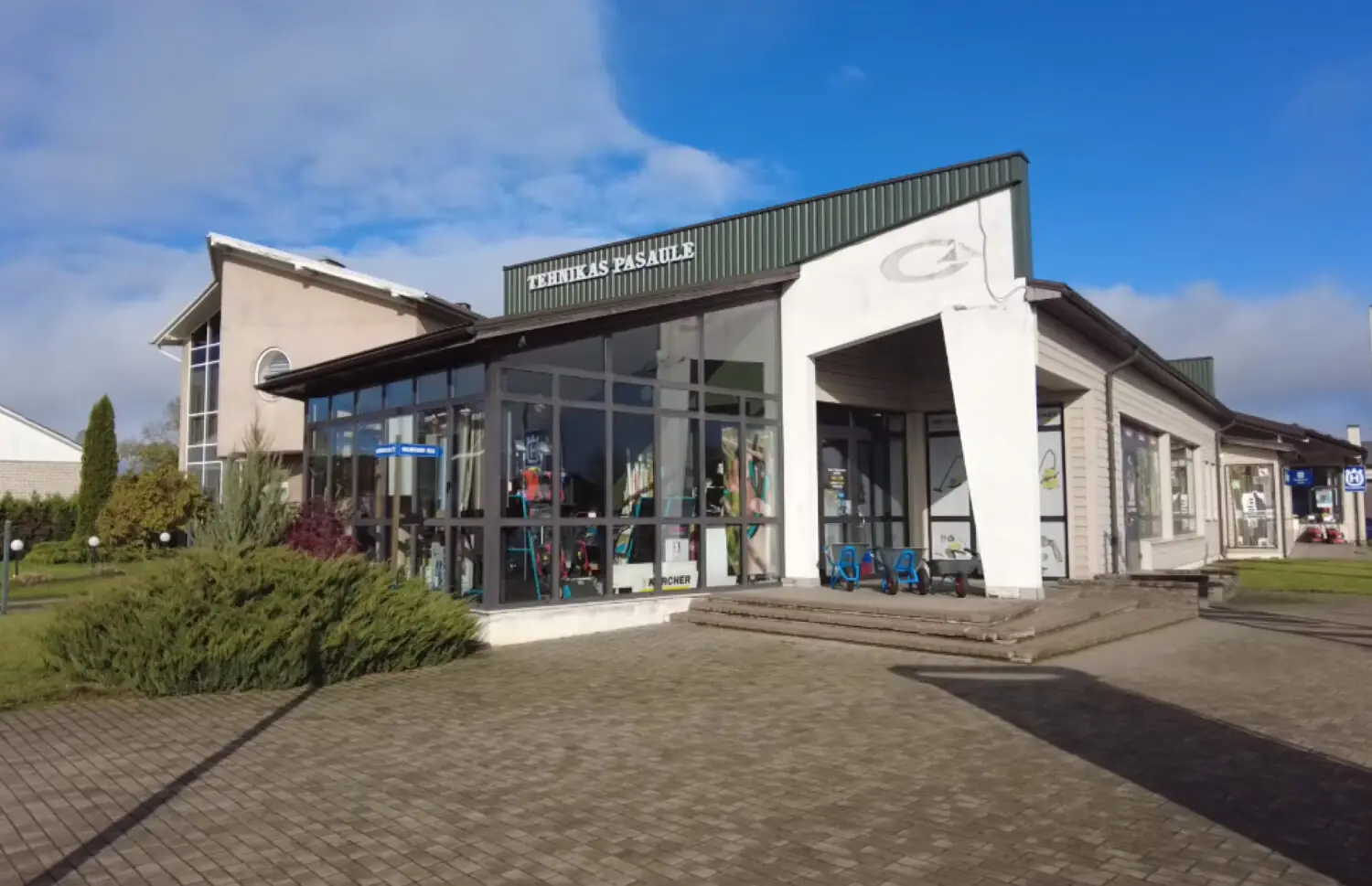
Photo: Aleksandr Semenov, Russian Camembert
Soviet Heritage
Playful postmodernist architecture is in many ways antithetical to Soviet utilitarianism. Comparing the buildings of the 1990s with those made in the 1970s, one sometimes gets the impression that, after a long period of abstinence, the planners engaged in kinky sex. What forms they didn’t make!
But the desire to make new architecture doesn’t mean destroying the old. And Preili respects the heritage of the past. Here you can admire the preserved metal reliefs from the Soviet times. The panels decorating the post office building at 21 Raiņa Boulevard and the “Preiļu Siers“ office at 75 Daugavpils Street are in good condition.
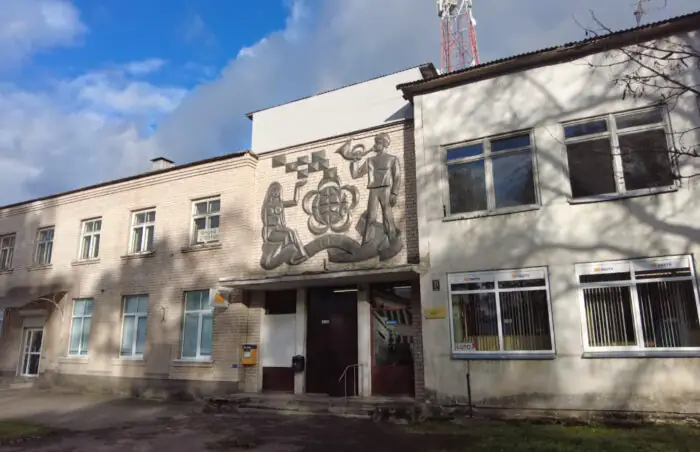
Photo: Aleksandr Semenov, Russian Camembert
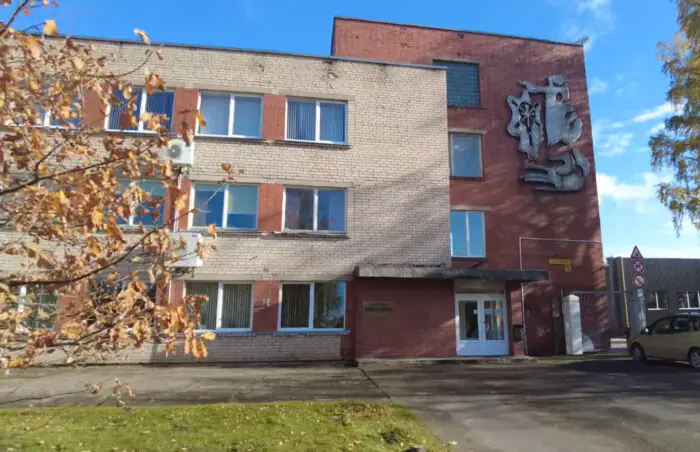
75 Daugavpils Street
Photo: Aleksandr Semenov, Russian Camembert
Capitalist Romanticism
Architects in the 1990s–2000s not only debated the Soviet past, but were also inspired by the pre-Soviet era. The planned economy was replaced by a market system with its own rules, but designers tired of strict restrictions wanted to relax and play a little. Many turned to medieval architecture, some were inspired by the architectural heritage of the XIX — early XX century, and some were inspired by Art Deco of the 1920–1930s. The romanticization of old architecture became the main driving force behind the Latvian variety of postmodernism.
Preili, like many other places in the country, has preserved many fine examples of Neo-Gothic architecture. Of course, this environment influenced the artistic solution of postmodernist projects. On the one hand, the scale of the new buildings should not argue with the attractions of the local manor park, but on the other hand, they try to fit organically into the stylistics of the historical ensemble.
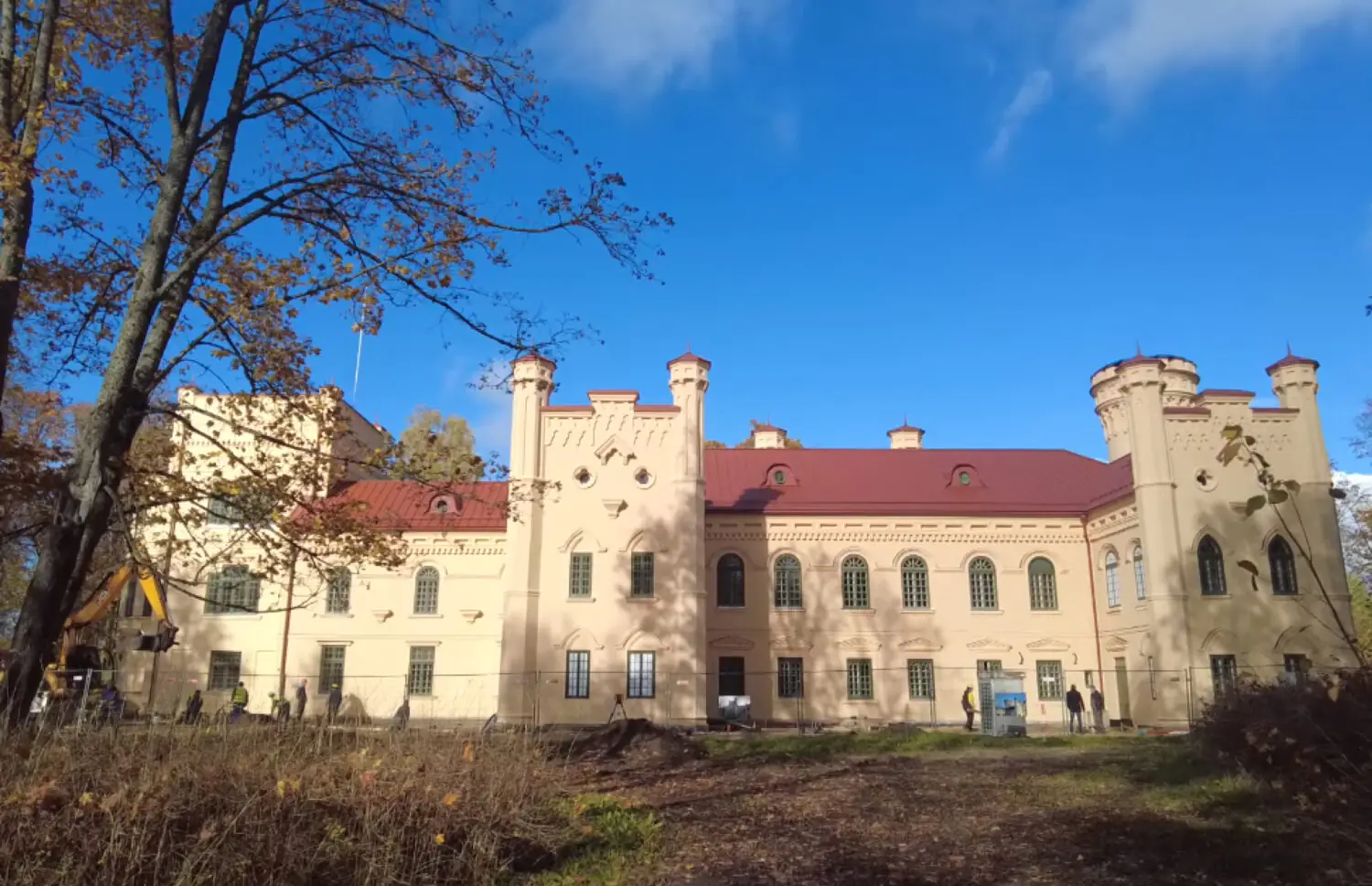
Photo: Aleksandr Semenov, Russian Camembert
As a result, customers and designers in the post-Soviet period did not always follow the precepts of capitalism to maximize profit: they did not build to earn, but earned to build. Such romantics shaped the architectural image of independent Latvia liberated from Soviet occupation.
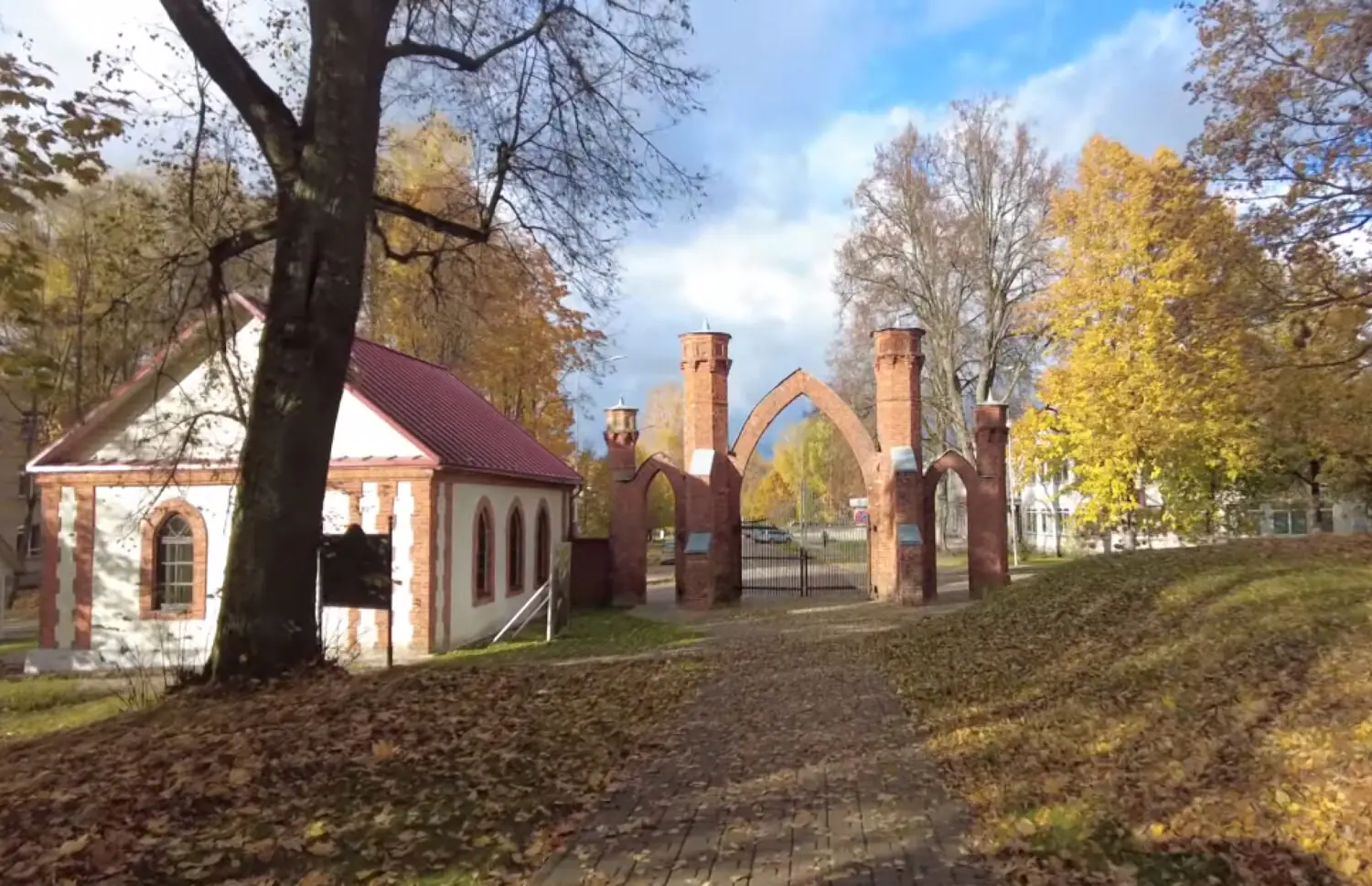
Photo: Aleksandr Semenov, Russian Camembert


